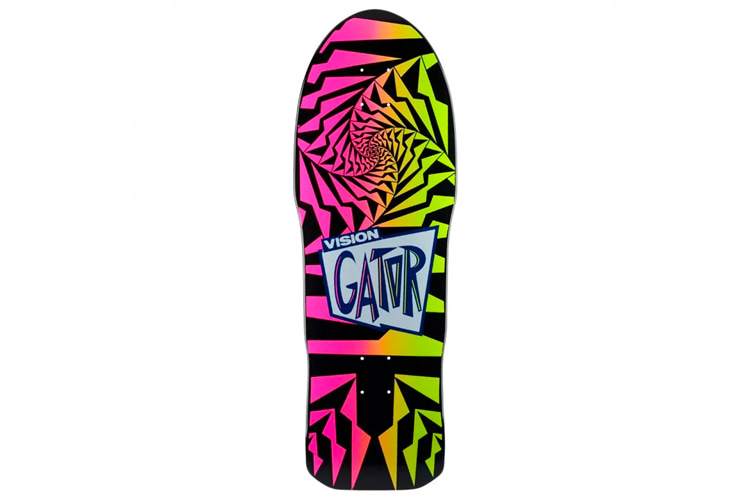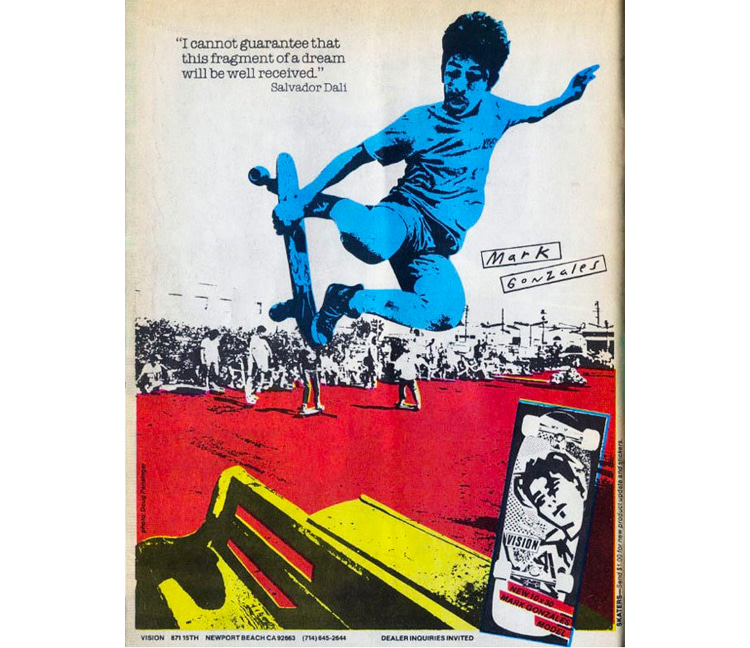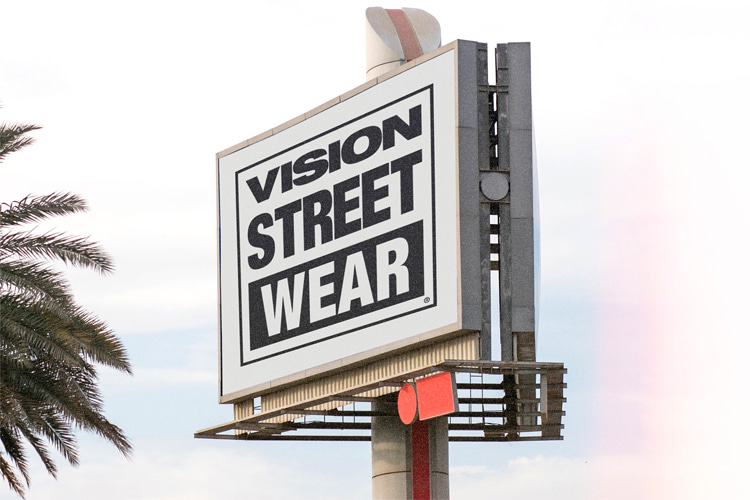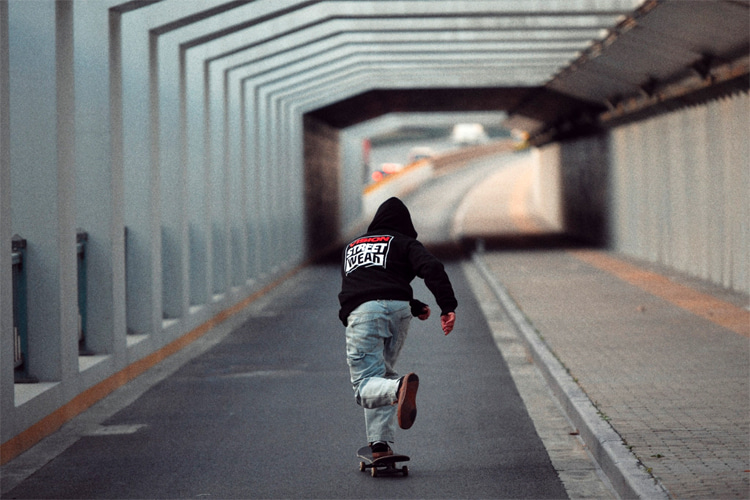Vision was one of the biggest and most iconic skateboard companies to emerge in the 20th century.
The company's roots go back to skateboarding's second wave of popularity in the 1970s.
A woman named Lou Ann Lee began making shorts for skateboarders in her garage. The skate shorts were durable and had the name Mad Rats.
Top vertical skaters like Eddie Elguera promoted the shorts, and they began to get more popular.
From this beginning, Lou Ann's brother, Brad Dorfman, got involved in the distribution of the product.
Brad also introduced an accessory to the skateboard market called the Space Plate, a plastic skid plate placed at the tail of the board.
As the Space Plate started to sell, a decision was made to get into manufacturing skateboards.
Brad chose the name Vision, and his first deck was a fairly non-descript board with two-color grip tape.
The second board, called the Beef Stick, was 10 x 30 inches.

Mark "Gator" Rogowski
When local Del Mar skater Mark Rogowski got his name on a Vision board, things started to take off.
Mark's nickname was "Gator."
He had a tremendous following, and his signature board was extremely popular among youngsters.
Rogowski was followed by a host of other riders, including the extraordinary street skater Mark Gonzales.
"Gator" rode for Vision and was one of the most talented vert riders of the 1980s.
He later received national media attention when he killed his girlfriend's friend and was sentenced to 31 years of imprisonment.

The Move to Street Wear
At the beginning of the 1980s, Brad started a licensing agreement with Tom Sims.
"Tom wasn't doing much with the brand name at the time, so we put together a deal, and Vision began producing and marketing boards under the Sims name," recalls Brad.
The deal proved to be a very wise move - a number of great skaters, including Kevin Staab and Pierre Andre, would join the Sims team.
Although Vision was becoming successful with their own boards and those of Sims, what really stood them apart from other competitors was their expansion into what are called soft goods, that is, shoes and t-shirts.
"Vision was the first skateboard clothing company," explains Brad.
"We had Gator and other riders coming to us and saying, 'surf companies want to sponsor us. You have to start making your own clothing.'"
From this simple premise, Vision Street Wear was born.
Vision Street Wear was literally everywhere.
Shoes, shirts, hats, pants, jackets, and magazines carried numerous ads featuring all the Vision pros skating with the products.
The brand was so successful that mainstream fashion publications started writing about the new look and dubbed it "Mondo Vision."

The Birth of an Iconic Brand
At a surf show in Florida in the mid-1980s, Brad met up with Paul Schmitt of Schmitt Stix, and the two got together to set up a woodshop in California.
Schmitt Stix, Vision, and Sims were three of the top skateboard companies in the 1980s, and they were all under the Vision empire.
Brad was also producing boards for other companies. It was a vast operation that generated enormous amounts of revenue.
Over the years, Vision developed several unique products and gear.
They were one of the first to market a double concave board, and their Vex Cave design increased the strength of skateboards.
Vision was also one of the first manufacturers to round the rails of their decks.
The firm also got heavily involved with video production during the 1980s and formed a successful company called Unreel Productions.
Their first video was called "Skate Visions" (1984), but most skaters from that era probably remember "Psycho Skate" (1988) best.
Fall and Rebirth
Brad Dorfman has many great memories of the 1980s.
"Traveling with the team across the United States was great, but the best memory I have was the Vision Pro Contest," recalls Brad.
The Vision Pro Contest took place in 1987 and was an enormous event staged indoors, with over 10,000 spectators.
Due to many different things happening in the skateboard world, Vision's fortunes began to change towards the end of the 1980s.
"One of our problems was that we had all vert riders, and the focus shifted to street skating. We were slow to change," says Brad.
Vision had to let several riders go and begin rebuilding the team.
Vision Street Wear also got a little out of control. Things grew pretty fast in too many areas.
However, as the 1990s drew to a close, the Vision logo was back, and demand for their products grew once again.
Words by Michael Brooke | Skateboarder and Author of "The Concrete Wave: The History of Skateboarding"
